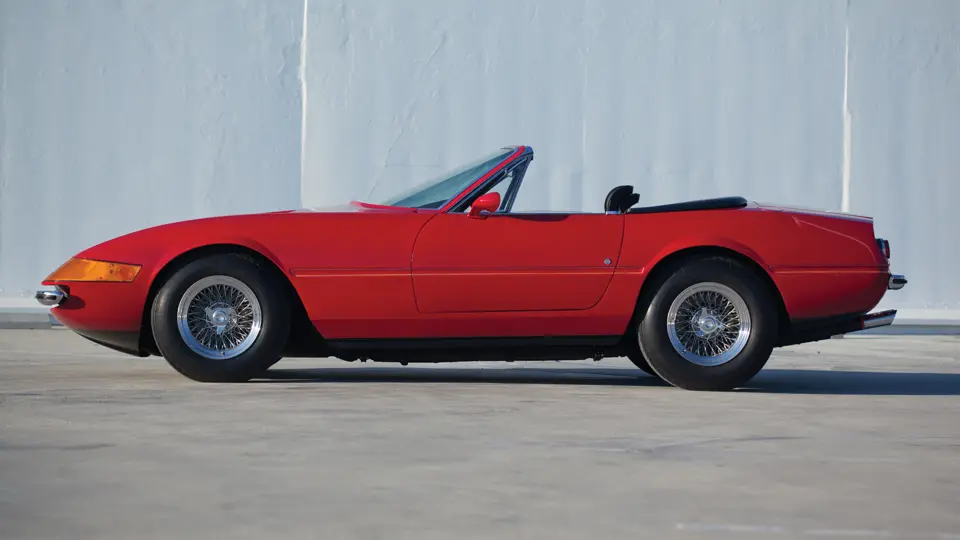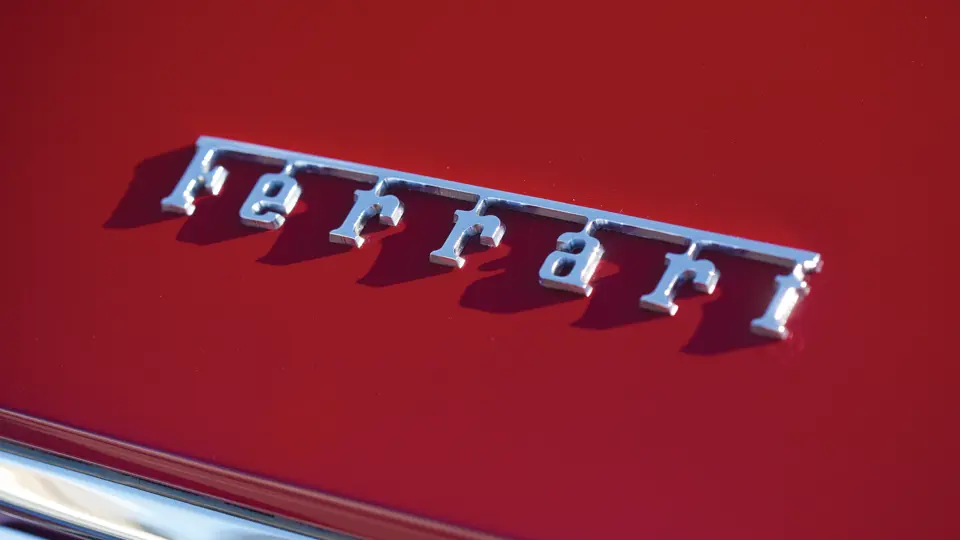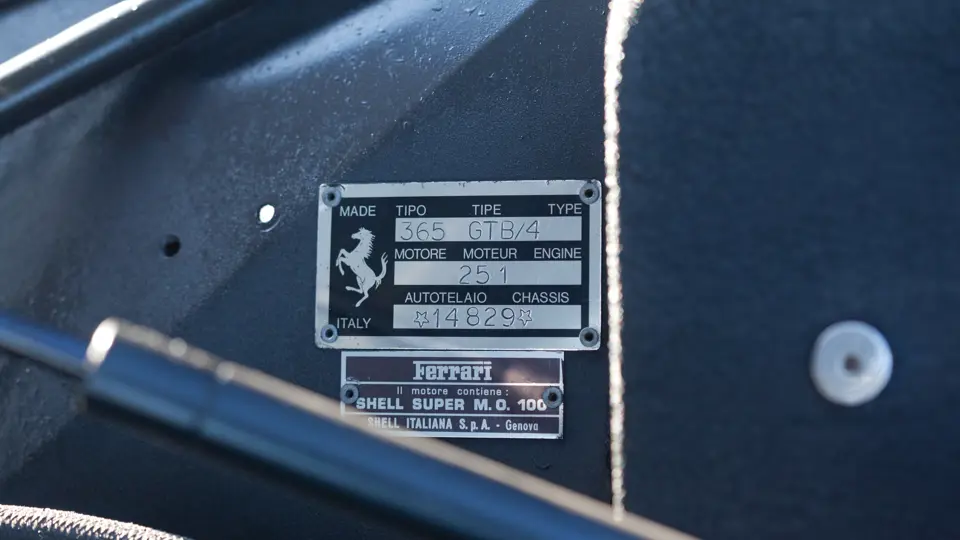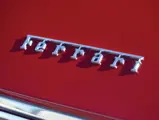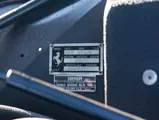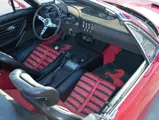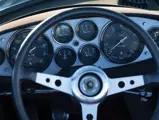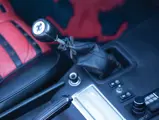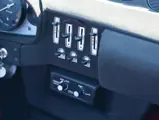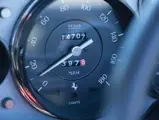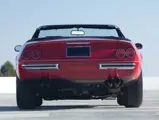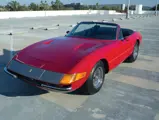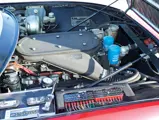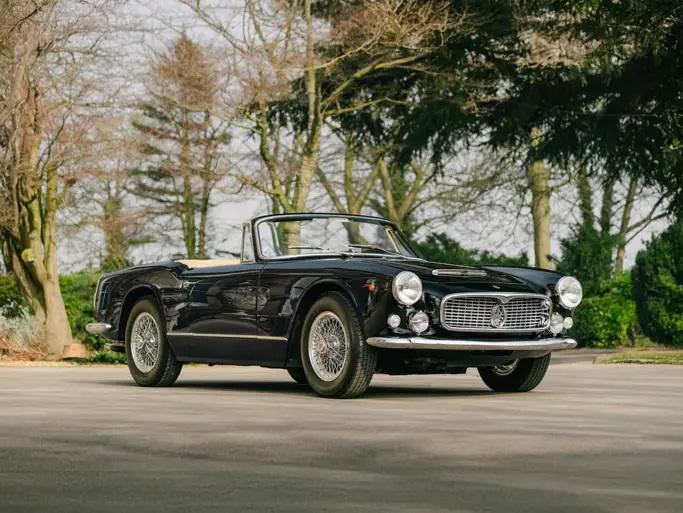
1971 Ferrari 365 GTB/4 Daytona Spider by Scaglietti
{{lr.item.text}}
$1,650,000 USD | Sold
{{bidding.lot.reserveStatusFormatted}}
- Star of The Gumball Rally
- Formerly the property of Mel and Noel Blanc
- Featured in Road & Track and Motor Trend Classic
- Offered from a private Southern California collection
- Perhaps the most famous Daytona Spider in the world
352 hp, 4,390 cc DOHC V-12 engine with six Weber 40DCN17 carburetors, five-speed manual transaxle, independent front and rear suspension by coil springs and wishbones, and four-wheel hydraulic disc brakes. Wheelbase: 94.5 in.
And now, my friend, the first rule of Italian driving: what’s behind me is not important.
It was 1976 when the late Raul Julia, in character as Italian racing driver Franco Bertolli, spoke those words from behind the wheel of a Ferrari 365 GTB/4 Daytona Spider, confirming them by snapping off the car’s rearview mirror and casting it casually over his shoulder. The quote summed up the spirit of both the movie in which Julia and the Ferrari appeared, the madcap racing comedy The Gumball Rally, as well as the ethos of the Daytona Spider itself.
Owning a Daytona Spider meant something. Out of the 1,406 Daytonas produced between 1968 and 1973, only 121 were spiders; they were the official factory-built convertible versions of the car that a Cavallino article describes as “a sight to behold, mean looking and muscled, weaving dramatically on its overworked suspension, shaking and darting under heavy braking in a corner, literally pushing air and dirt aside, leaving a wake and making its own weather, loud as hell and scattering birds to the four winds.” Add the feeling of an open roof, the wind whipping one’s hair, the sun casting upon one’s face, and you had a car that was the Enzo of the 1970s—an ultimate Prancing Horse status symbol.
By 1976, when The Gumball Rally was released, the Daytona Spider had been out of production for three years, but it was still the only car in which a self-respecting Italian racing legend, fictionalized or not, would be seen.
The car offered here, chassis number 14829, was the Spider used in The Gumball Rally, but that is only part of its story. Equipped by the factory as a left-hand drive U.S.-specification car with air conditioning, seats with red inserts, and instruments reading in miles, this Spider was originally delivered through Bill Harrah’s Modern Classic Motors, of Reno, Nevada. Its original owner, a Mr. Nicholson, had the nose band repainted silver metallic grey, an iconic feature that this particular car, and only this car, retains to the present day.
Not long afterward, the Spider was sold to Ferrari mechanic and racing driver Joseph Crevier, of Mission Viejo, California, who made it available for sale through classifieds in the Los Angeles Times and AutoWeek in 1975 and 1977, respectively. Crevier also made the car available for The Gumball Rally, and after filming, it returned to his ownership; the nose, repainted red for the movie, was returned to its original grey afterwards.
During his bankruptcy in 1982, Crevier reportedly spent 20 days jailed on Terminal Island for refusing to tell the bankruptcy court the whereabouts of this car! Despite its owner’s best efforts, the Spider was eventually sold by Crevier’s court-appointed trustee in 1983 to Walt McCune, who rapidly traded it to Noel Blanc, son of Mel Blanc, “The Man of a Thousand Voices.”
Many of the most famous characters from Warner Brothers’s golden era of animation, including Bugs Bunny, Porky Pig, Daffy Duck, and Yosemite Sam, were all voiced by Mel Blanc, whose career behind America’s favorite cartoon characters lasted for over 60 years. Blanc was an active and beloved member of the Hollywood social scene, where he was known not only for his voices, but also as a devoted motorhead who stabled some of the movie colony’s fastest, most enthusiastically driven cars—a roster that rivaled Steve McQueen’s in its number of fabulous Ferraris, Corvettes, and other treasures. The collection was shared with his son, who continued to lovingly maintain and enjoy the cars after his father’s passing.
While in the Blancs’ collection, the Spider was serviced and road-tested by Modena Imports of LaBrea, repainted red by Bill De Carr and the renowned Junior’s House of Color, and reupholstered by hot rodding legend Tony Nancy. Enjoyed by the Blanc family for 14 years, it appeared in a 1983 issue of Road & Track magazine, as well as at the Rosso Rodeo Concours in Beverly Hills in June 1995. It was reportedly driven only three times a year, spending the rest of the time properly serviced and maintained in their climate-controlled garage.
Noel Blanc sold the Ferrari in 1997 to the present owners, a private collection in Southern California. It has been regularly displayed, including at the 38th Ferrari Club of America National Meeting and Concours at Century Plaza in Los Angeles in 2002 and also at the Blackhawk Museum in 2005. For a feature article in the July/August 2006 issue of Motor Trend Classic, it was reunited with the Shelby 427 Cobra that was its co-star in The Gumball Rally, 30 years later.
Today, the Spider remains very much as the Blancs sold it and as it appeared on screen. It retains its Tony Nancy upholstery and its distinctive trademark silver snout, while the body now wears fine yellow pinstriping, rectangular reflectors below the taillights, and a white reverse light below the rear license plate frame. The odometer shows under 15,000 actual miles, which is believed to be original mileage since new and is a figure that is verified by the car’s wonderfully honest condition throughout.
If it were only a Daytona Spider, this would be an important automobile, as it has low mileage and is in well-preserved condition. Yet, this particular car has surpassed that, with its status as a star of one of the all-time greatest “car movies,” as an automobile driven and enjoyed by one of Hollywood’s most beloved voices and passionate motorists, as the canvas on which Junior and Tony Nancy created art, and, finally, as part of one of the great car collections. It is now a centerpiece of Southern California car culture, and it is, perhaps, the most famous Daytona Spider in the world.
What’s behind you is not important.
Titled as 1972.


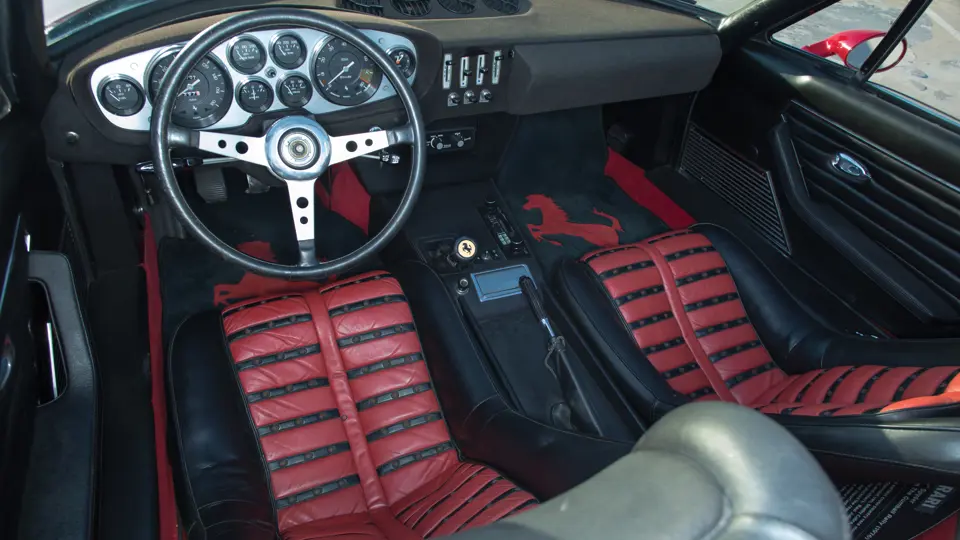

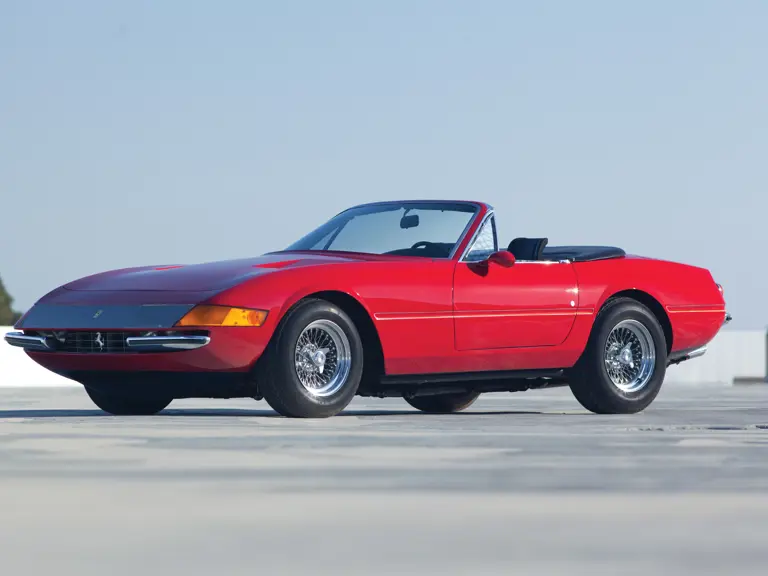


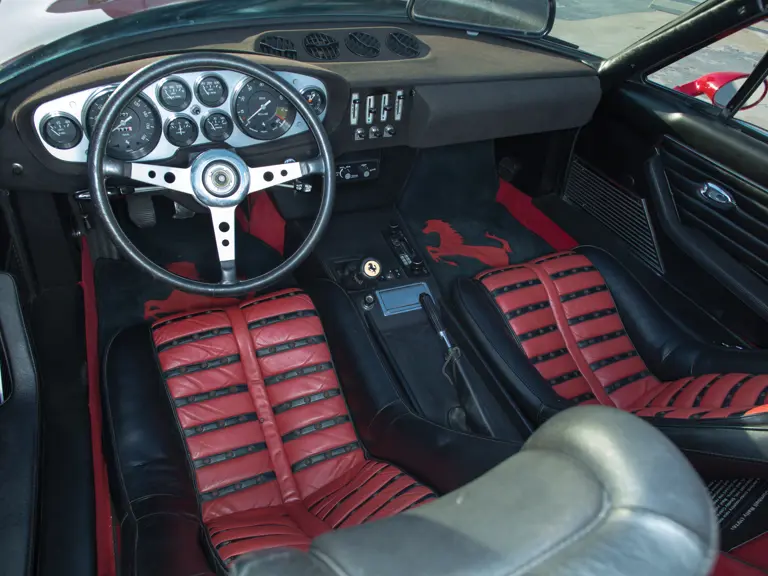
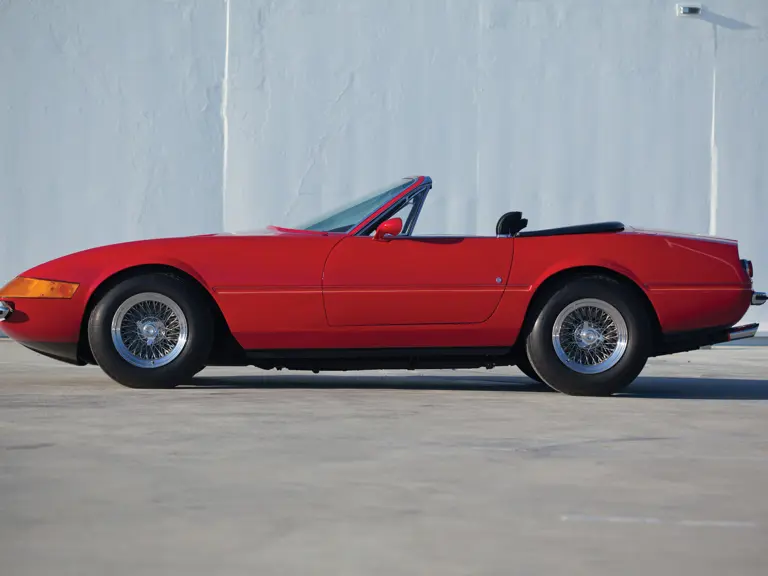
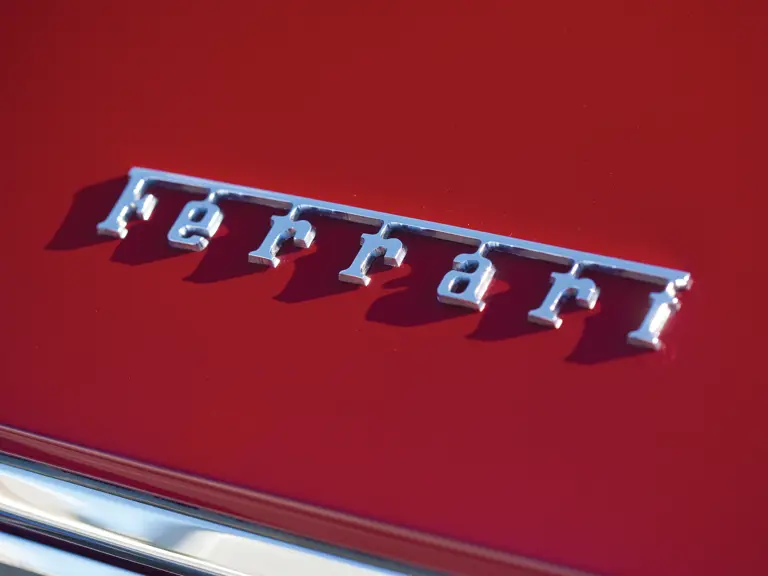
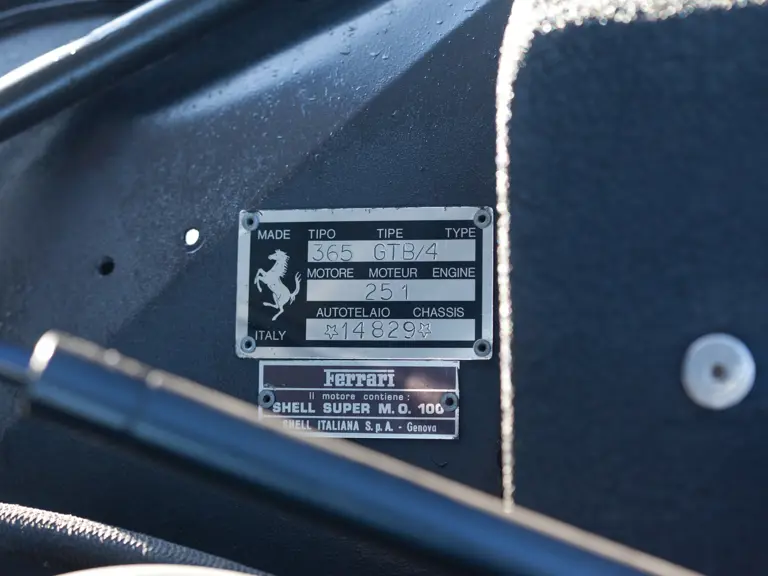
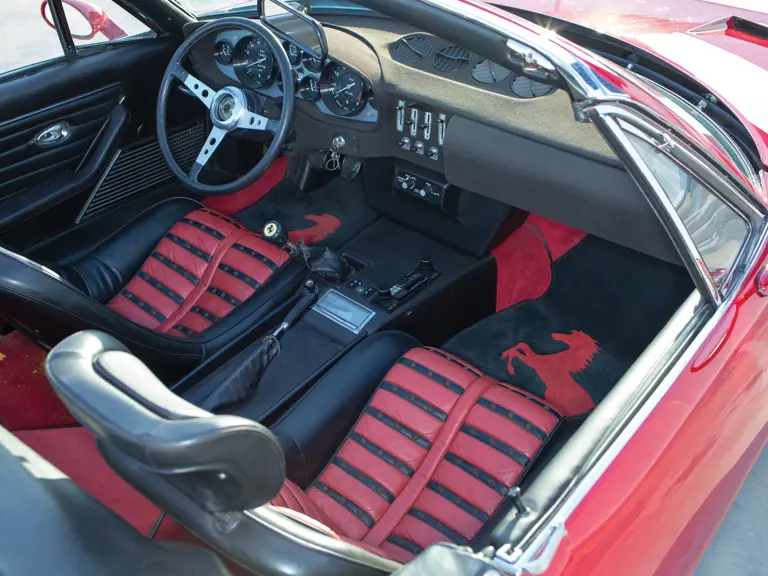
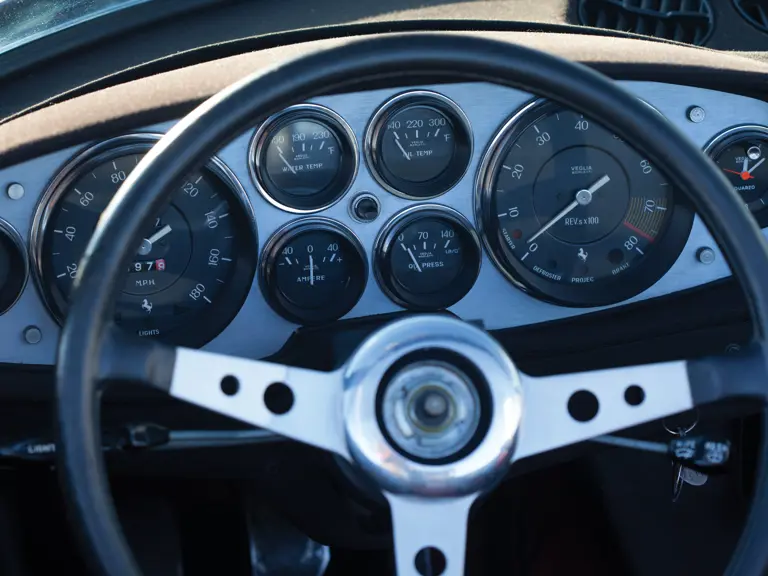

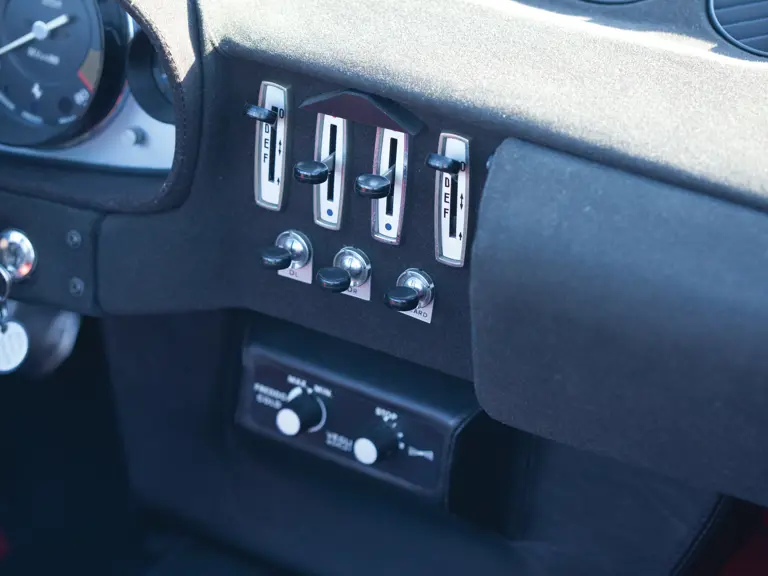
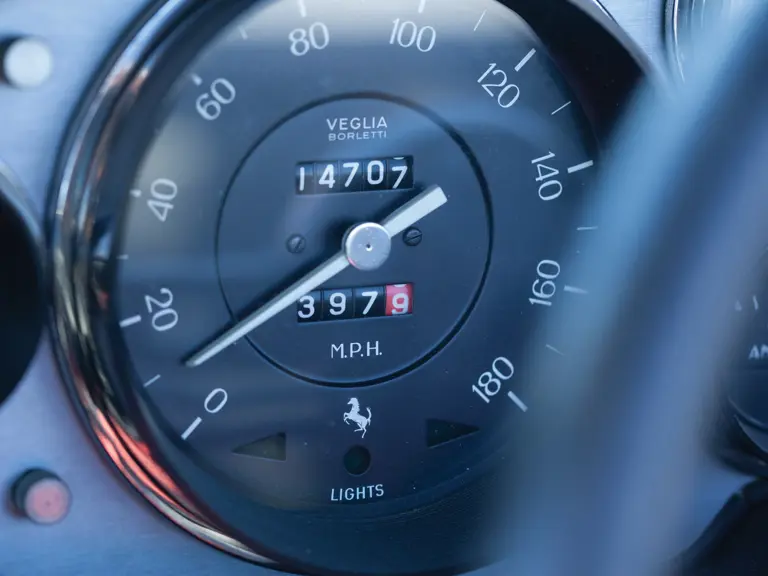
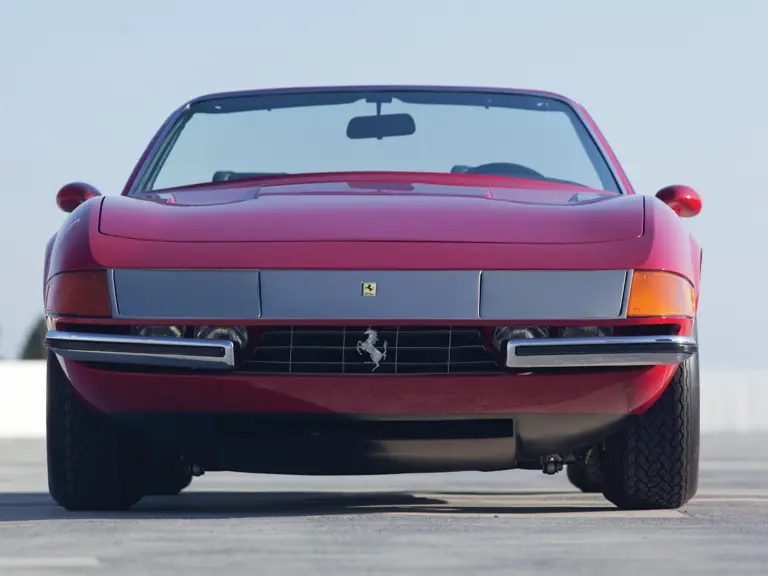
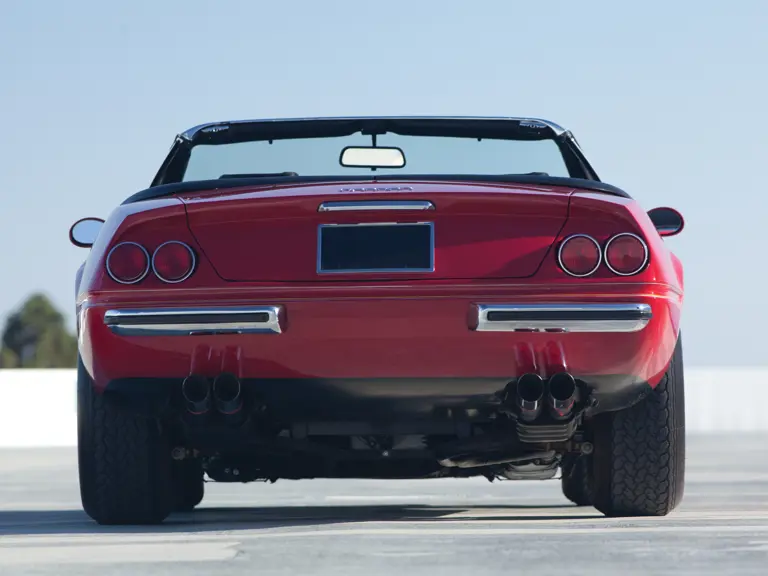
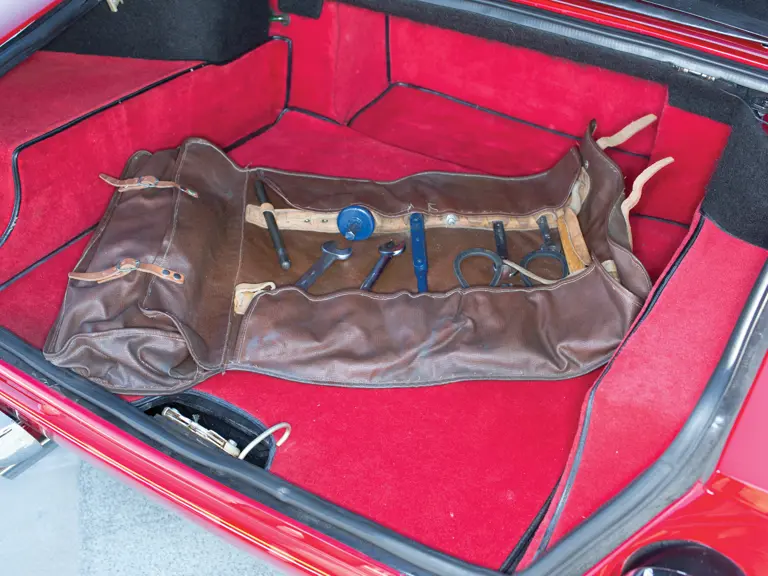
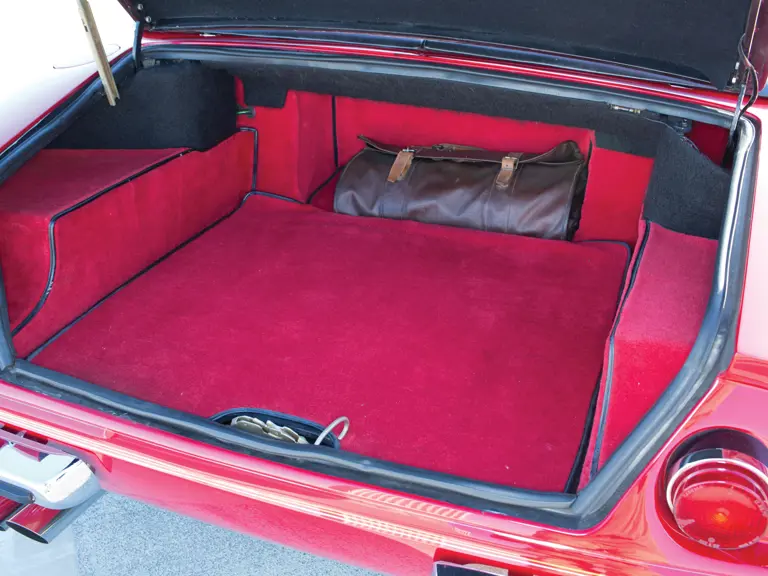
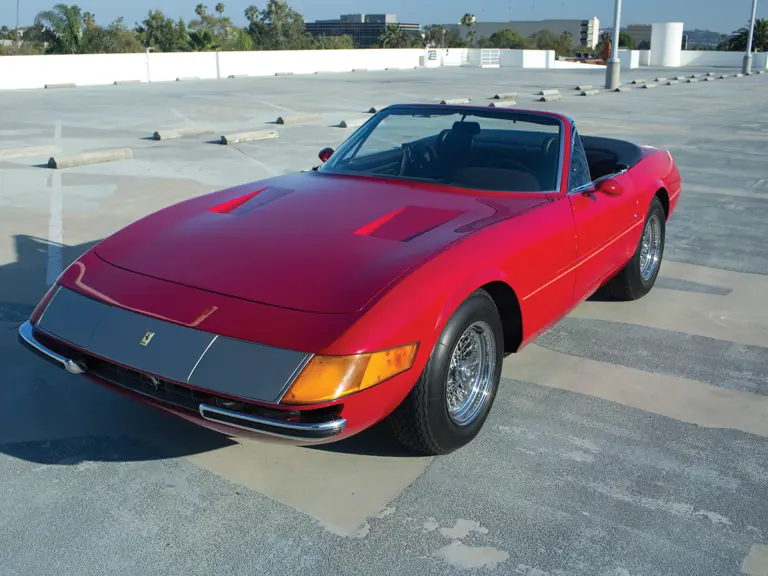
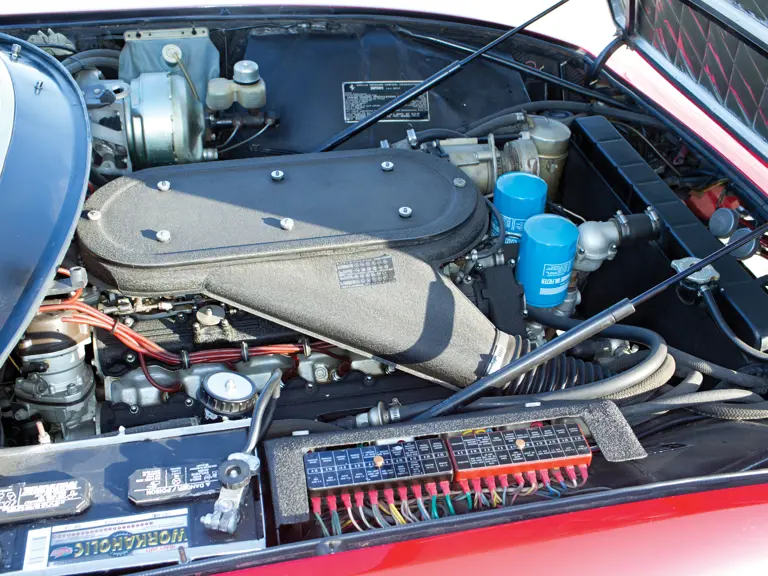
 | Monterey, California
| Monterey, California
